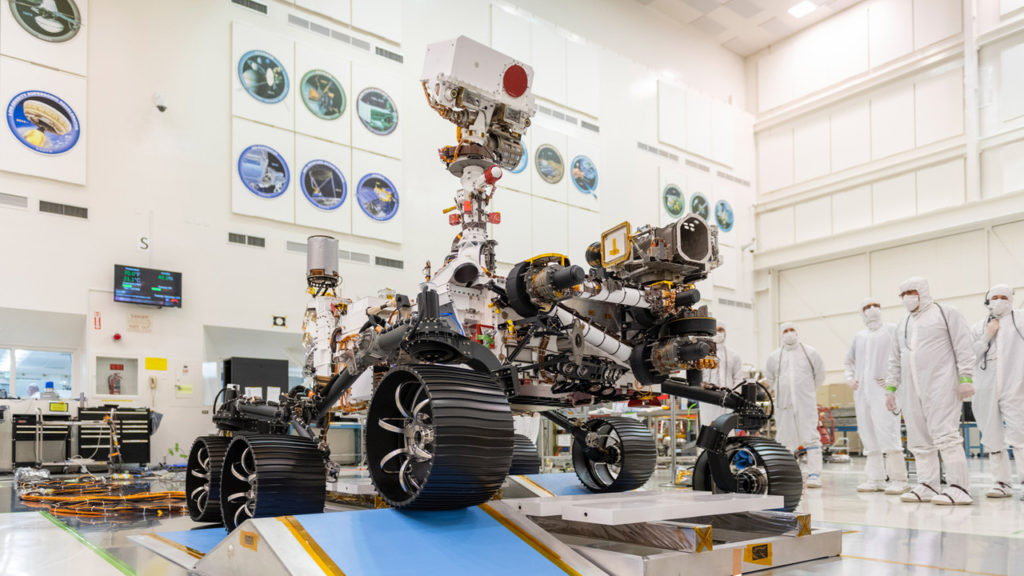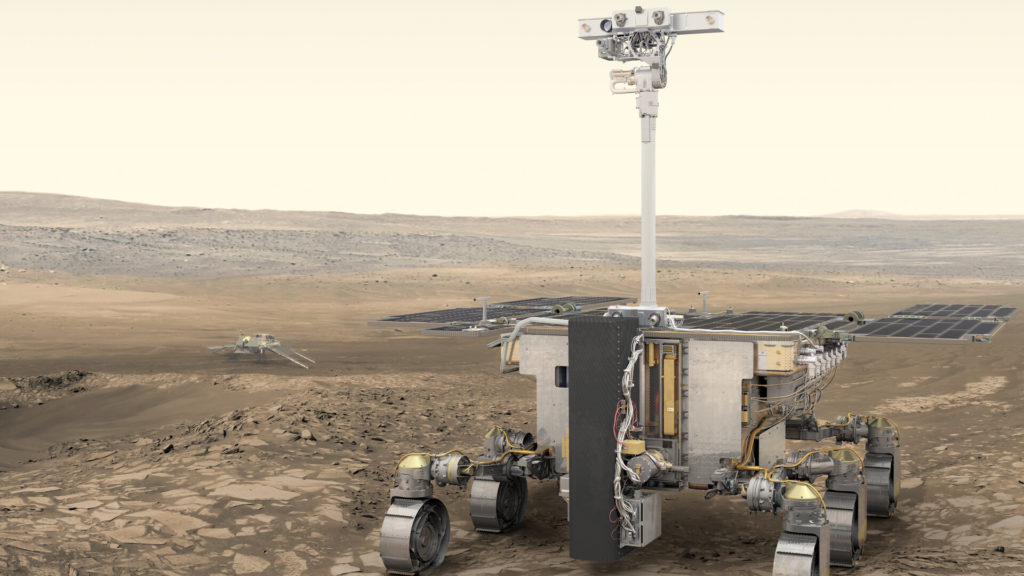One of the great accomplishments of the Apollo missions was to bring samples back to home hundreds of kilograms of lunar rock. Geologists had a lifetime’s worth of samples back to home from the lunar surface captured from several different spots. These samples have been under continuous analysis since the Apollo 11 astronauts came home over 50 years ago. And they’re still making discoveries. Scientists have samples of the Sun’s solar wind, particles from a comet’s tail, a few grams from an asteroid.
But there’s one world, the focus of so much scientific study, which has never had a sample returned that is from Mars.
Mars Sample Collection
NASA and the ESA have been making plans to bring a sample home from Mars. But how NASA and ESA are working to get samples from Mars back to Earth because so far everything that we’ve sent to Mars has just stayed there, landers, rovers, everything.

But NASA’s Mars 2020 mission and ESA’s ExoMars mission of is going to drive around Mars and take core samples at cool, interesting places. It’s then going to seal them up, leave them on the ground. And a future mission will actually go back and get them.

For decades, and now, the perseverance mission is ready to takeoff from by end of this month to finally bringing a chunk of the Red Planet home to Earth for us to study directly.
In 2009, NASA and the ESA started making serious plans to bring a samples of Mars to home, Publicly announcing their cooperation on a mission. Anticipating the future sample return mission, both NASA and ESA have building their upcoming rovers to be the first stage in sending material back home.
As it the rovers goes across the surface of the Red Planet, NASA’s Mars 2020 rover will collect interesting samples and then drop them on the surface as it goes. ESA’s Rosalind Franklin rover, was actually due for launch in 2020, but due to the COVID-19 Pandemic they delayed the launch no early to 2023 even this mission is designed to collect and store samples from the surface of Mars in pen-sized canisters, which will be ready for pickup.
How it is done?
A sample return mission would have 3 parts. First, there’d be a fast-moving fetch rover built by the European Space Agency to collect samples for study.
Then a NASA ascent vehicle which would transfer the samples to Mars orbit. And an orbiting mission from ESA that would retrieve the samples and bring them back to Earth.
ESA’s Sample Fetch Rover would be a relatively light-weight vehicle, no greater than about 120 kilograms. It would need to be able to travel 20-30 kilometers going 200 meters per day, autonomously routing around hazards in its way.
Over the course of this period, it would pick up dozens of samples left on the surface by Mars 2020 and Rosalind Franklin, choosing the 30 or so most scientifically interesting to send home. After several months of collecting samples, the Fetch Rover would arrive at the Mars Sample Retrieval Lander. This is a spacecraft that has many similarities to NASA’s Curiosity and Mars 2020 rovers. It would use a heatshield then parachute as it enters the Martian atmosphere, finally lowering the ascent rocket to the surface of Mars.
It would sit on Mars for up to 150 days, waiting for samples from the Fetch Rover. When the samples were loaded on board, the Ascent Vehicle would fire its hybrid or solid rocket motor, carrying the samples into a 350-km altitude orbit. Then it would be intercepted by ESA’s Earth Return Orbiter, making a completely autonomous rendezvous millions of kilometers from Earth.
It’ll then use a solar-electric ion engine to make the long journey back to Earth. And then, sometime in the 2030s, scientists will get their hands on about 500 grams of material from the surface of Mars.
In early 2019, the White House included money in their proposed budget for a Mars Sample Return mission, which ideally could launch as soon as 2026. Although a mission like this has been proposed many times before, this is the first time that actual funding was set aside.
Government gave NASA $109 million in 2020 to work on “future Mars activities” which is essentially the sample return mission. So now, after almost 50 years of planning, a serious sample return mission to Mars is in the works.
When was the mission first planned
NASA has actually been planning for a Mars sample return mission since the early 1970s, even before the launch of the Viking spacecraft.
Why it is needed to bring the samples
The goals of a return mission would include the search for life, not just life today, but past life, and even the chemical precursors of life. By returning samples of Mars back home, scientists could perform all kinds of experiments on the Martian surface, exposing it to water, thicker atmosphere and nutrients to see if there’s any active bacteria.
This experiment was attempted with Viking, but the results were inconclusive and planetary biologists still argue over them. They could analyze the samples under powerful microscopes, searching for any microscopic fossils, or any other indication there’s life there.
In addition, scientists could understand the history of the surface of Mars, and how it was affected by water over millions of years. Samples could be returned from some of the most interesting spots, like the sediments of lakes, deposits around hydrothermal vents, and the deltas of ancient rivers. They could bring back samples from recent and ancient meteorite strikes, volcanic eruptions, and regions that were exposed to wind for a long time. They could also study the long-term history of Mars over billions of years, to try and understand when vast planetary changes occurred to make the planet so cold and dry.
By studying these samples, scientists could match up the atmospheric sample with the gases found in those Mars rocks to be certain they came from the Red Planet. They’d be able to study the Martian dust up close, you know, the dust that can form planet-wide storms capable of ending rover missions, and could be a risk for future astronauts. The proposal was made in 2001, for a mission that would fly in 2007 and return samples by 2010, but it never got off the ground. Finally after nearly 2 decades the Mars 2020 rover is ready to take off.
Additional Resource:
